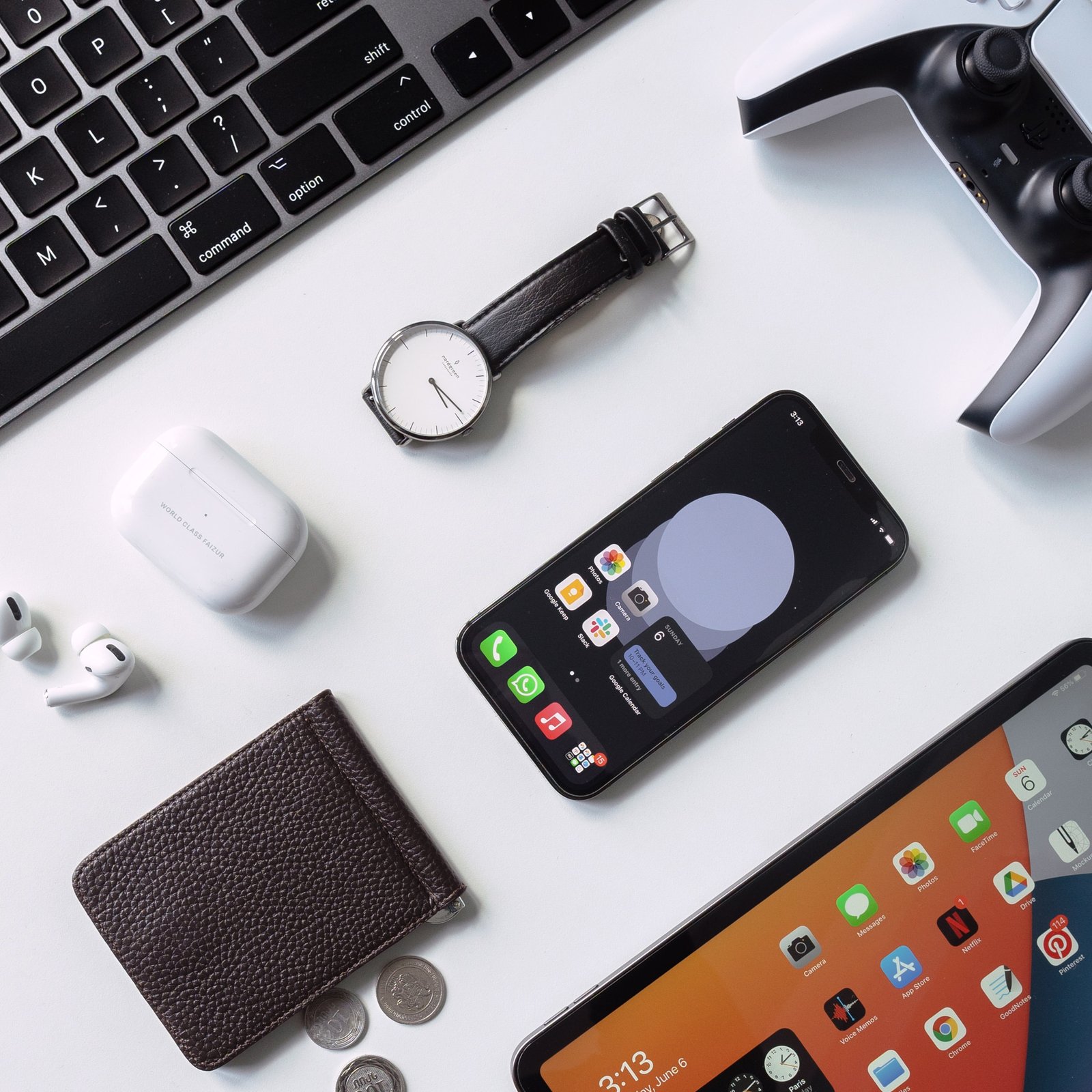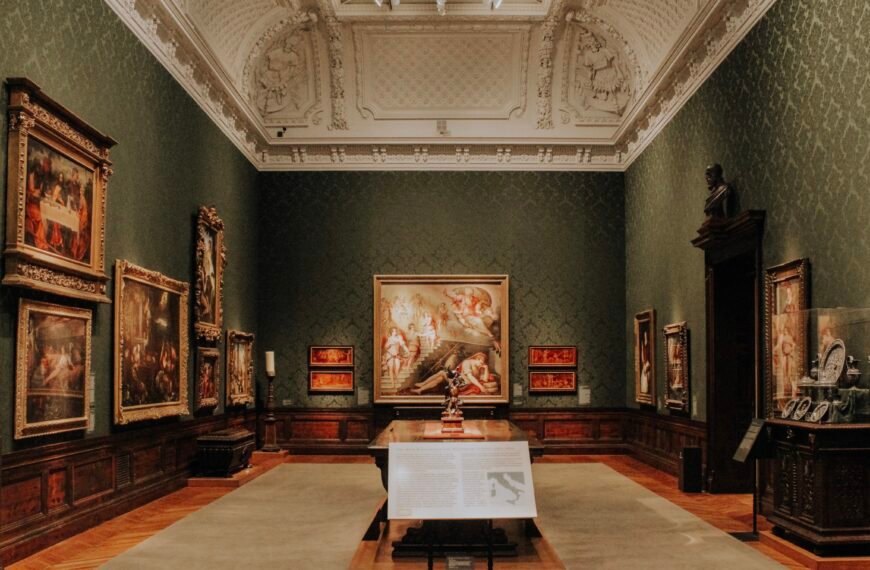Have you ever found yourself standing in front of your closet, unsure of what to wear to an art museum? It can be a tricky decision to make, wanting to strike the perfect balance between comfort and style while still being respectful of the art and the gallery space. Fear not, for we are here to guide you through the labyrinth of fashion choices and help you pick out the perfect outfit that will make you feel confident and ready to appreciate the beauty of the art. Whether you’re attending a special exhibition opening or simply exploring the gallery on a leisurely day, we’ve got you covered with our tips on what to wear to an art museum.

Choosing the Right Clothing
When visiting an art museum, it is important to choose the right clothing that ensures both comfort and style. Consideration should be given to factors such as the weather, the need for comfortable shoes, the option to dress in layers, the avoidance of noisy fabrics, and the preference for wrinkle-resistant clothing. By paying attention to these aspects, you can ensure a pleasant and enjoyable experience as you explore the wonderful world of art.
Consider the Weather
Before heading to the art museum, it is essential to check the weather forecast and dress accordingly. If it’s a sunny day, opt for light and breathable fabrics that will keep you cool and comfortable. On colder days, layer your clothing to stay warm, but make sure the layers are easily removable as some museums can get warm and crowded. By considering the weather, you can ensure that you dress appropriately and stay comfortable throughout your visit.
Select Comfortable Shoes
Art museums often involve a lot of walking and standing, so it is crucial to choose comfortable footwear. Opt for shoes that provide adequate support and cushioning to prevent discomfort and fatigue. Sneakers or flat shoes are usually a safe and comfortable choice, allowing you to explore the museum without any hindrance. Avoid high heels or shoes that are likely to cause discomfort, as this may distract you from fully enjoying the artwork.
Dress in Layers
Museums can have varying temperatures, so dressing in layers can help you adapt to different environments. Start with a light base layer that allows your skin to breathe, such as a comfortable cotton t-shirt. Then, add a sweater or light jacket that can be easily removed if needed. By dressing in layers, you can regulate your body temperature and stay comfortable throughout your visit.
Avoid Noisy Fabrics
While appreciating art, it is important to be mindful of others’ experiences as well. Avoid wearing clothing made from noisy fabrics like sequins or crinkly materials, as the sound can be distracting to both yourself and those around you. Opt for clothing made from softer materials that won’t create unnecessary noise, allowing everyone to fully immerse themselves in the artwork.
Opt for Wrinkle-Resistant Clothing
Wrinkles in clothing can detract from an otherwise polished and put-together look. To maintain a neat appearance throughout your visit, choose wrinkle-resistant fabrics that are less likely to crease easily. This way, you can feel confident and comfortable in your outfit without having to worry about the clothes looking unkempt.
Dressing Respectfully
When visiting an art museum, it is important to dress in a manner that shows respect for the establishment, the artwork, and fellow visitors. By researching the museum’s dress code, covering shoulders and knees, avoiding offensive or controversial clothing, wearing appropriate footwear, and refraining from excessive perfume or cologne, you can ensure that you stay within the bounds of respectful attire.
Research the Museum’s Dress Code
Before heading to the art museum, take the time to research and familiarize yourself with the museum’s dress code. Some museums may have specific guidelines regarding attire to maintain the integrity of the artwork and the atmosphere of the establishment. By adhering to the dress code, you show respect for the museum’s rules and enhance the overall experience for yourself and others.
Cover Shoulders and Knees
Many art museums, especially those with historical or religious artwork, may require visitors to dress modestly by covering their shoulders and knees. This is done out of respect for the artwork and the cultural context it represents. Be sure to choose clothing that covers these areas to ensure that you comply with any dress requirements and demonstrate your respect for the museum’s collection.
Avoid Offensive or Controversial Clothing
Art museums are places of cultural and artistic appreciation, so it is important to avoid wearing clothing that may be offensive or controversial. This includes clothing with explicit language, offensive symbols, or inappropriate imagery. By choosing attire that is respectful and appropriate, you can create a harmonious and inclusive atmosphere for everyone to enjoy.
Wear Appropriate Footwear
In addition to dressing modestly, it is equally important to wear appropriate footwear when visiting an art museum. Avoid wearing flip-flops, sandals, or any footwear that exposes your feet completely, as this may be considered disrespectful. Opt for closed-toe shoes that provide adequate coverage and support, ensuring both your comfort and adherence to museum etiquette.
Avoid Excessive Perfume or Cologne
While it’s important to smell pleasant when visiting an art museum, it is equally important not to overwhelm the senses of others with excessive perfume or cologne. The strong scent may distract from the artwork and disrupt the experience for fellow visitors. Opt for a subtle fragrance or consider forgoing perfume or cologne altogether, allowing everyone to fully immerse themselves in the beauty of the art.

Expressing Personal Style
One of the joys of visiting an art museum is the opportunity to express your personal style through your clothing choices. By considering the artwork, embracing artistic and bold choices, using accessories to enhance your outfit, balancing fashion-forward and classic pieces, and avoiding distracting outfits, you can create a unique and fashionable look that reflects your individuality.
Consider the Artwork
When choosing your attire for an art museum visit, consider the artwork on display. Take inspiration from the colors, themes, and styles of the artwork and incorporate them into your outfit. For example, if you are visiting a museum exhibiting vibrant contemporary art, you may choose to wear colorful and bold clothing that echoes the energy and creativity of the artwork. Let the artwork be your muse and use it as a guide to create a visually cohesive ensemble.
Embrace Artistic and Bold Choices
Art museums are places to celebrate creativity and self-expression, so don’t be afraid to embrace artistic and bold choices in your clothing. Experiment with unique patterns, textures, and color combinations to create an outfit that truly reflects your personality. Whether it’s a statement piece of jewelry, a vibrant accessory, or a daring print, let your fashion choices reflect your artistic side.
Use Accessories to Enhance the Outfit
Accessories can elevate an outfit from ordinary to extraordinary. When visiting an art museum, consider using accessories to enhance your overall look. A statement necklace, a colorful scarf, or a stylish hat can add that extra touch of flair to your ensemble and make it stand out. However, be mindful not to go overboard with accessories, as they should complement your outfit rather than overpower it.
Balance Fashion Forward and Classic Pieces
Striking a balance between fashion-forward and classic pieces in your outfit can create a timeless yet trendy look. Incorporate a mix of modern and traditional elements into your ensemble to showcase your personal style while respecting the museum’s ambiance. For example, pair a classic tailored blazer with a contemporary printed blouse and tailored pants. This balance between classic and trendy elements will ensure that your outfit is both stylish and appropriate for the art museum setting.
Avoid Distracting Outfits
While it’s important to express your personal style, it’s equally important to avoid outfits that may distract from the artwork or disrupt the experience of others. Avoid wearing excessively revealing or attention-grabbing clothing that may draw attention away from the art. It’s essential to strike a balance between self-expression and respecting the museum environment, ensuring that your outfit complements the art rather than competing with it.
Practical Considerations
When preparing for a visit to an art museum, it’s important to consider practical factors that will enhance your overall experience. By bringing a small bag or purse, wearing dark colors to minimize stains, bringing a light jacket or sweater, considering the museum’s environment, and avoiding bulky or oversized bags, you can ensure a hassle-free and enjoyable visit.
Bring a Small Bag or Purse
Carrying a small bag or purse is essential when visiting an art museum. It allows you to carry your essentials such as your phone, wallet, and notepad without feeling weighed down. Opt for a crossbody bag or a small backpack to keep your hands free and ensure convenience as you navigate through the museum. However, be mindful of the size, as many art museums have restrictions on bag dimensions for security purposes.
Wear Dark Colors to Minimize Stains
Accidents can happen, and spills or stains are sometimes unavoidable. To minimize the appearance of stains and keep your outfit looking fresh, consider wearing dark-colored clothing when visiting an art museum. Dark colors like black, navy, or charcoal are less likely to show stains and can help you maintain a polished appearance throughout your visit.
Bring a Light Jacket or Sweater
Even if the weather is warm outside, art museums often maintain a cool temperature indoors to help preserve the artwork. To ensure your comfort during your visit, bring a light jacket or sweater that you can easily put on or take off as needed. This not only keeps you comfortable but also allows you to focus on enjoying the art without any distractions.
Consider the Museum’s Environment
Each art museum has its unique ambiance and environment. Consider the overall atmosphere of the museum, whether it’s contemporary and sleek or historic and ornate, and let that inspire your clothing choices. For example, if you’re visiting a modern art museum, you may choose to wear clean lines and minimalist designs to echo the museum’s aesthetic. By aligning your outfit with the museum’s environment, you can create a cohesive and harmonious visual experience.
Avoid Bulky or Oversized Bags
While it’s important to carry a small bag or purse for your essentials, it’s equally important to avoid bulky or oversized bags that can be cumbersome as you navigate the museum. Large backpacks or bags may disrupt the flow of foot traffic and potentially damage artwork if not handled carefully. Opt for a compact bag that is both functional and unobtrusive, ensuring a seamless and enjoyable visit to the art museum.

Dressing for Specific Types of Art Museums
Different types of art museums may have specific aesthetics and themes. To fully immerse yourself in the experience, consider tailoring your outfit to match the specific type of museum you plan to visit. This section provides some guidelines for dressing appropriately when visiting contemporary art museums, historical art museums, modern art museums, outdoor or sculpture gardens, and museums with specific exhibitions or themes.
Contemporary Art Museums
When visiting a contemporary art museum, consider incorporating elements of modern and edgy fashion into your outfit. Embrace bold patterns, unconventional shapes, and avant-garde designs that reflect the progressive nature of contemporary art. Experiment with asymmetrical silhouettes, unexpected color combinations, and unique accessories to create a visually striking ensemble that resonates with the contemporary art on display.
Historical Art Museums
Historical art museums often showcase artwork from different time periods, so it can be fascinating to align your attire with the era or style of the artwork displayed. If you’re visiting a museum with Renaissance or Baroque art, consider wearing tailored clothing and classic silhouettes that evoke the elegance and sophistication of those eras. Pay attention to details like lace, embroidery, or statement jewelry to capture the essence of the historical art.
Modern Art Museums
Modern art museums celebrate innovation, experimentation, and unconventional approaches to art. Your outfit for a visit to a modern art museum can reflect these principles. Embrace clean lines, minimalist designs, and monochromatic color schemes to channel the essence of modernism. Consider wearing sleek and sophisticated clothing that is both effortlessly chic and aesthetically aligned with the contemporary art on display.
Outdoor or Sculpture Gardens
Visiting an art museum with an outdoor or sculpture garden allows you to enjoy art in a natural and open-air setting. When dressing for this type of museum, prioritize comfort and functionality. Opt for lightweight and breathable fabrics that allow ease of movement while exploring the outdoor spaces. Incorporate practical and stylish accessories such as a wide-brimmed hat to protect you from the sun and comfortable shoes suitable for walking on various terrains.
Specific Exhibitions or Themes
Some art museums host specific exhibitions or themes that are unique and require special consideration when it comes to dressing. Research the exhibition or theme beforehand and let it inspire your outfit. For example, if the exhibition explores a specific culture or time period, you may choose to wear attire that pays homage to that culture or period. Allow yourself to be guided by the theme and create an outfit that enhances your connection to the artwork on display.
General Guidelines for Different Seasons
Art museums can be visited throughout the year, so it’s essential to consider the different weather conditions that each season brings. Here are some general guidelines for dressing appropriately when visiting art museums during spring, summer, fall, and winter.
Spring
Spring often brings mild temperatures and occasional rain showers. Dress in layers to adapt to fluctuating temperatures, starting with a light base layer and adding a cardigan or light jacket that can be easily removed if it gets warmer. Opt for breathable fabrics and embrace pastel colors or floral prints to celebrate the season.
Summer
In summer, temperatures can be hot and humid, so choosing lightweight and breathable fabrics is crucial. Opt for loose-fitting clothing made from natural fibers like cotton or linen to keep cool. Choose bright and vibrant colors and embrace playful patterns to reflect the lively and joyful atmosphere of the season.
Fall
Fall brings cooler temperatures and changing foliage. Embrace autumnal colors like deep reds, burnt oranges, and earthy browns in your outfit. Layer with cozy sweaters or lightweight jackets as needed. Consider adding accessories like scarves or hats to keep you warm and stylish during your museum visit.
Winter
During winter, temperatures can be cold, so it’s important to dress warmly. Layer clothing to trap heat and insulate your body. Wear a warm coat or jacket, a cozy sweater, and thermal leggings or jeans. Accessorize with a trendy hat, scarf, and gloves to keep you comfortable during your visit. Opt for darker colors and luxurious fabrics like cashmere or wool to add a touch of sophistication to your winter outfit.
Additional Tips and Suggestions
In addition to the specific guidelines for dressing for an art museum, here are some extra tips and suggestions to keep in mind to ensure a pleasant and stylish visit.
Wear Comfortable Clothing for Walking
Art museums often involve a lot of walking and standing, so it’s important to wear comfortable clothing that allows for ease of movement. Avoid tight-fitting or restrictive clothing that may hinder your ability to enjoy the artwork and explore the museum space. Choose loose-fitting pants or skirts and breathable tops that allow you to move freely and comfortably throughout your visit.
Consider the Photography Policy
Before taking any photos in the museum, familiarize yourself with the photography policy of the art museum you’re visiting. Some museums may have restrictions on photography in certain areas or for certain exhibitions. If photography is allowed, be mindful not to use flash, as it may damage the artwork. Additionally, avoid wearing clothing that could reflect light and potentially distract or disrupt other visitors’ experiences.
Avoid Clothing with Reflective or Shiny Surfaces
When visiting an art museum, it’s best to avoid clothing with reflective or shiny surfaces. These surfaces can create unwanted glare or reflections, which can distract from the artwork or disrupt the overall ambiance of the museum. Opt for matte fabrics and textures that won’t reflect light and allow the artwork to take center stage.
Avoid Wearing All Black or All White
While black and white are classic and versatile colors, wearing an all-black or all-white outfit to an art museum may blend you into the surroundings or make you appear too formal. Instead, consider incorporating pops of color or different shades and textures into your outfit to create visual interest. Add accessories or statement pieces that complement your attire and allow you to stand out while still respecting the artwork.
Choose Clothing That Allows for Movement
Art museums are places of exploration and discovery. Choose clothing that allows for ease of movement and doesn’t restrict your ability to fully engage with the art. Avoid tight-fitting clothing, especially around the shoulders and waist, that may limit your range of motion. Opt for looser silhouettes, stretchable fabrics, and comfortable shoes to ensure your outfit enhances rather than hinders your artistic experience.
Examples of Appropriate Outfits
To help you visualize what appropriate outfits for an art museum look like, here are some examples categorized into different styles:
Classic and Chic
A classic and chic outfit could consist of a tailored blazer, a crisp white button-down shirt, high-waisted trousers, and polished loafers. Accessorize with a simple gold pendant necklace and a structured leather handbag to complete the elegant yet sophisticated look.
Artsy and Creative
For an artsy and creative outfit, consider a flowing midi dress with a vibrant abstract print, paired with edgy ankle boots and a statement bucket bag. Layer with a leather jacket to add an urban touch, and accessorize with oversized sunglasses and colorful enamel earrings for a truly artistic ensemble.
Casual and Relaxed
A casual and relaxed outfit could include a pair of well-fitted jeans, a comfortable graphic t-shirt, and white canvas sneakers. Add a lightweight utility jacket and a crossbody bag for a practical yet stylish look. Complete the outfit with a baseball cap or a woven hat for a laid-back vibe.
Formal and Sophisticated
For a formal and sophisticated look, opt for a sleek black jumpsuit or a tailored pantsuit paired with a silk blouse. Add a pair of classic pumps and a structured handbag for a touch of refinement. Statement earrings and a delicate bracelet can add a touch of elegance to the ensemble.
Bohemian and Eclectic
To achieve a bohemian and eclectic look, consider a maxi dress with a floral or paisley print, paired with colorful beaded sandals and a fringed crossbody bag. Layer with a denim or suede jacket for a free-spirited vibe. Accessorize with a floppy hat, layered necklaces, and beaded bracelets to complete the boho-inspired ensemble.
Fashion Don’ts for Art Museums
While there are plenty of fashionable possibilities when choosing your art museum outfit, there are also a few fashion don’ts to keep in mind to ensure you make a positive impression:
Wearing High Heels or Uncomfortable Shoes
Art museums often involve a lot of walking and standing, so it’s best to avoid wearing high heels or uncomfortable shoes that can leave you sore and uncomfortable. Opt for comfortable shoes like sneakers, flats, or low-heeled boots that allow you to explore the museum with ease and comfort.
Loud or Disruptive Accessories
Avoid wearing accessories that are loud or disruptive in nature. Steer clear of noisy bangles, jangly bracelets, or accessories that make excessive noise when you move. Instead, choose accessories that complement your outfit without causing distractions to those around you.
Oversized Hats or Headwear
While hats can add a stylish touch to your outfit, it’s important to consider their size and how they may affect others’ viewing experiences. Avoid wearing oversized hats or headwear that may obstruct views or cast shadows on artwork or other museum visitors.
Wearing Sunglasses Indoors
Wearing sunglasses indoors is generally considered inappropriate and may hinder your ability to fully appreciate the artwork. Remove your sunglasses before entering the museum to ensure that you can fully immerse yourself in the experience.
Large Statement Jewelry
While statement jewelry can be a great way to express your personal style, it’s important to consider the size and impact of your jewelry choices. Avoid wearing large, bulky statement pieces that may distract from the artwork or obstruct views for others. Opt for smaller, more delicate pieces that add a touch of elegance without overpowering your overall look.
Conclusion
Choosing the right clothing for a visit to an art museum involves considering various factors, including the weather, the museum’s dress code, and the need for comfort and style. By dressing respectfully, expressing your personal style, and considering practical considerations, you can create a fashionable and appropriate outfit for your art museum visit. Whether you’re exploring contemporary art, historical masterpieces, or modern installations, your outfit should enhance your experience and allow you to appreciate the art to its fullest potential. By following these guidelines and using your creativity, you can dress to impress and make your visit to the art museum a memorable one.








